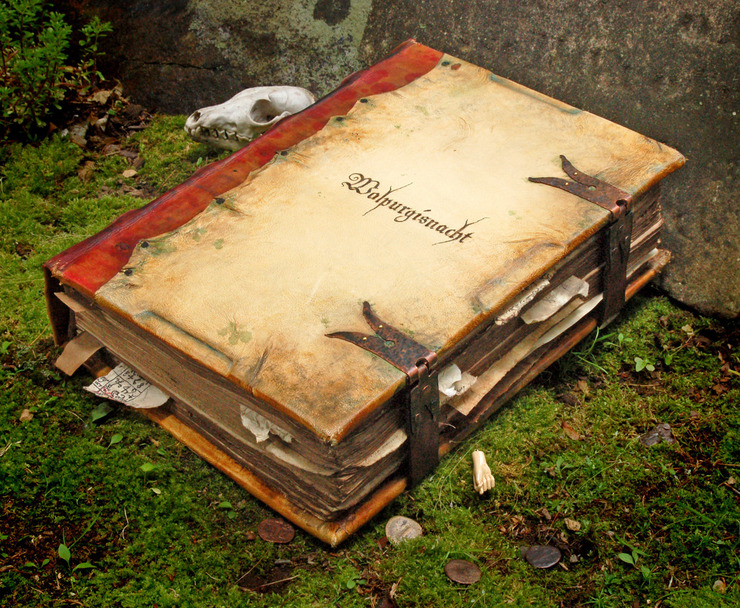In May I created a prop book for a movie currently in production. I’ve designed and created props for some big Hollywood blockbusters over the years, but this is decidedly not one of those, thankfully. It’s a small independent film by a first time writer/director named Steve Smith, starring unknowns. Hearing that was enough to get me intrigued, but when Steve sent me part of the script, I knew I had to work on this.
The working title for the film is “The House at the End of the Lane.” It’s set in the first half of the 20th century, starting out in 1918. It has elements of horror, occult, and mystery, but basically it’s a tragedy—the story of a man who has lost something so dear to him he will go to any lengths to regain it. He eventually sets in motion a series of events that leads to a catastrophe far worse than his original loss.
And this book is part of what brings down the pain. It’s believed to be 500 years old—although the knowledge in it is much older—and it emanates pure searing malevolence. Here are a couple of lines from the script:
At times, it has the smell of living death—like gangrene in a hospital ward. At other times, its leather binding seems new. I mentioned that the cover … is leather. Well, that may be true—it may not. I believe the cover is human. Skin, Mr. Chambers
The description of the book in the script is fantastic. I wish I could share more.
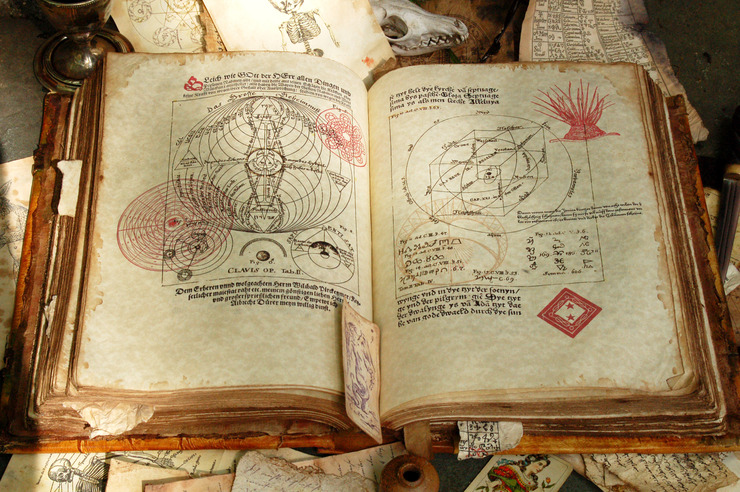
The interior is filled with collages of images and text from period books. Most of the text is German, taken from 15th century books. Many of the images are from the same period, for the sake of authenticity. But for the sake of what looks cool, there are images from other periods as well. The ones on this spread include two diagrams from Georg von Welling’s 1735 Opus Mago-Cabbalisticum et Theosophicum, a number puzzle designed by Ben Franklin, a Celtic knot, a diagram of a microbe and a heraldic device. One other pages, there are bits of electronic schematics, some diagrams and handwriting from George Washington’s school notebook, and diagrams of crystals and fungi from a 19th century dictionary.
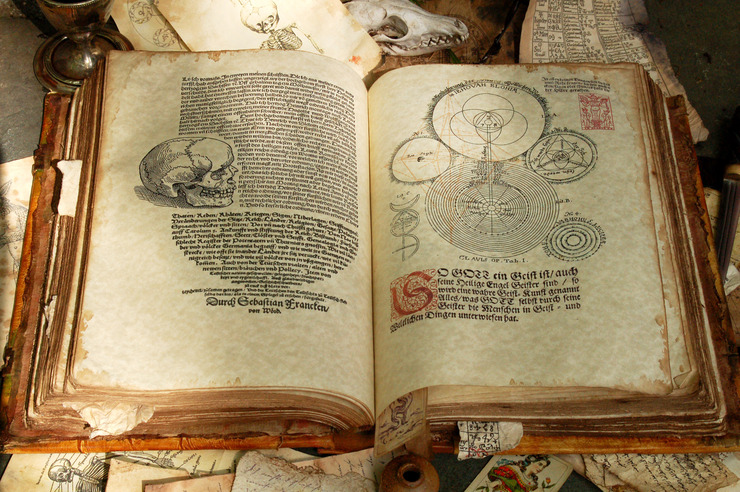
I also did a few dozen additional documents, inserted randomly in the pages. Letters in Old German script, diagrams, engravings from old anatomical texts, ancient Egyptian, Greek and Arabic mathematics scrolls, Sythio-Sarmatian inscriptions, tarot cards, and hoary scraps of every description. Doing the research for a project like this is easily half the work.
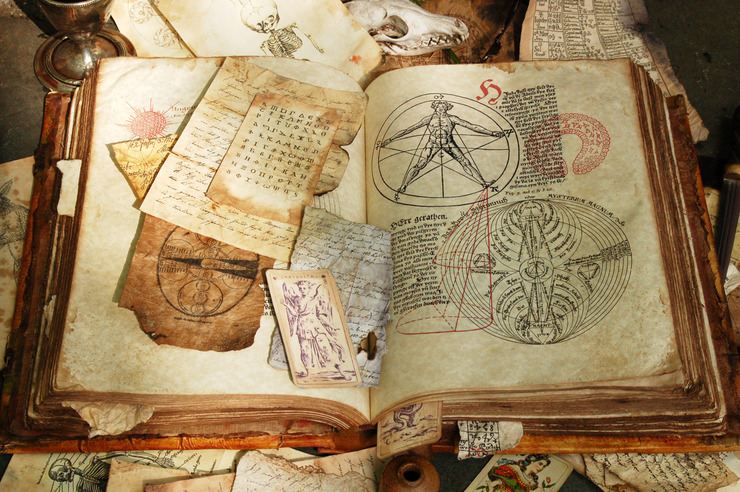
Here’s a closeup of the clasps and lettering.
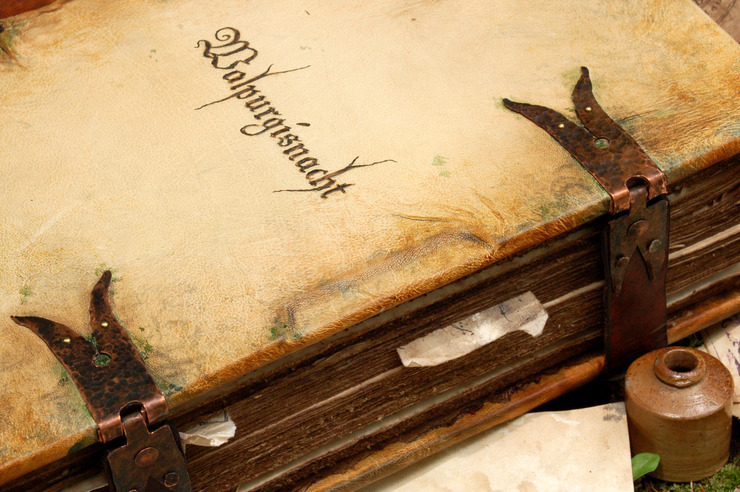
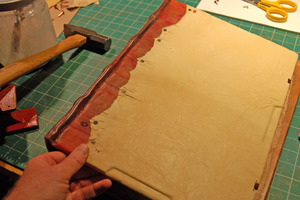 |
I was all out of human skin, so goatskin had to suffice. |
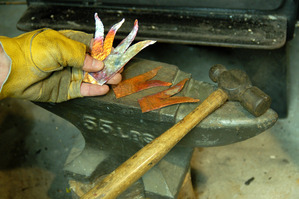 |
I made the clasps from thick copper heated and hammered to shape. |
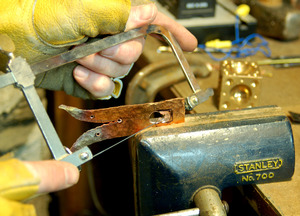 |
After the final shaping and oxidizing… |
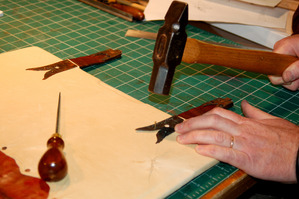 |
…I attached the clasps to the covers with brass pins, clinched on the back for strength. |
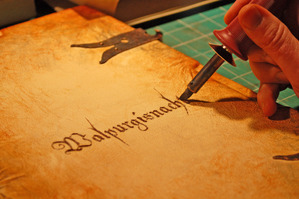 |
The cover was treated with many thin layers of dyes, stains and waxes to give it the appropriate scrofulous air. The next step was to burn the lettering deeply into the leather. |
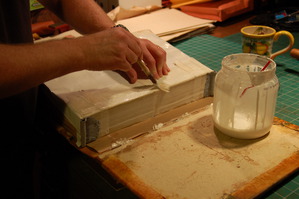 |
After the cover was done, I bound the pages, aged and stained them, and then bound them into the cover. The book is huge – about a foot wide, 17 inches tall and 5 inches thick. It’s also heavy—just under 20 pounds, so the binding had to be bombproof to stand up to rough treatment on set and hold together. |
Ross Macdonald is a letterpress artist, illustrator, and prop maker. This article also appears on drawger.com.










